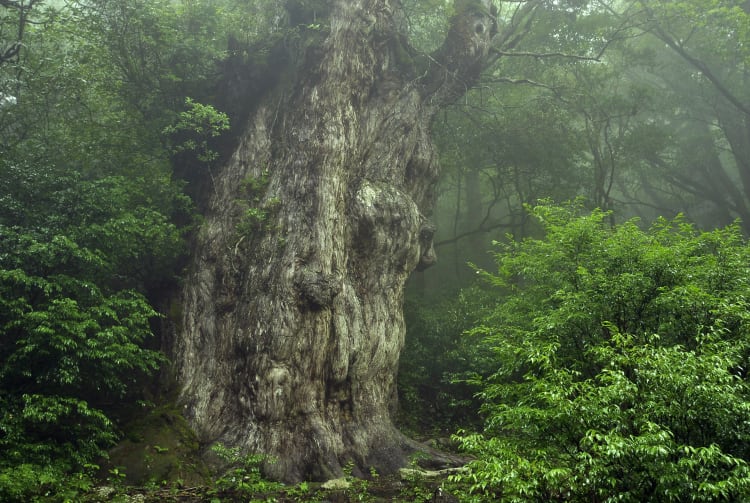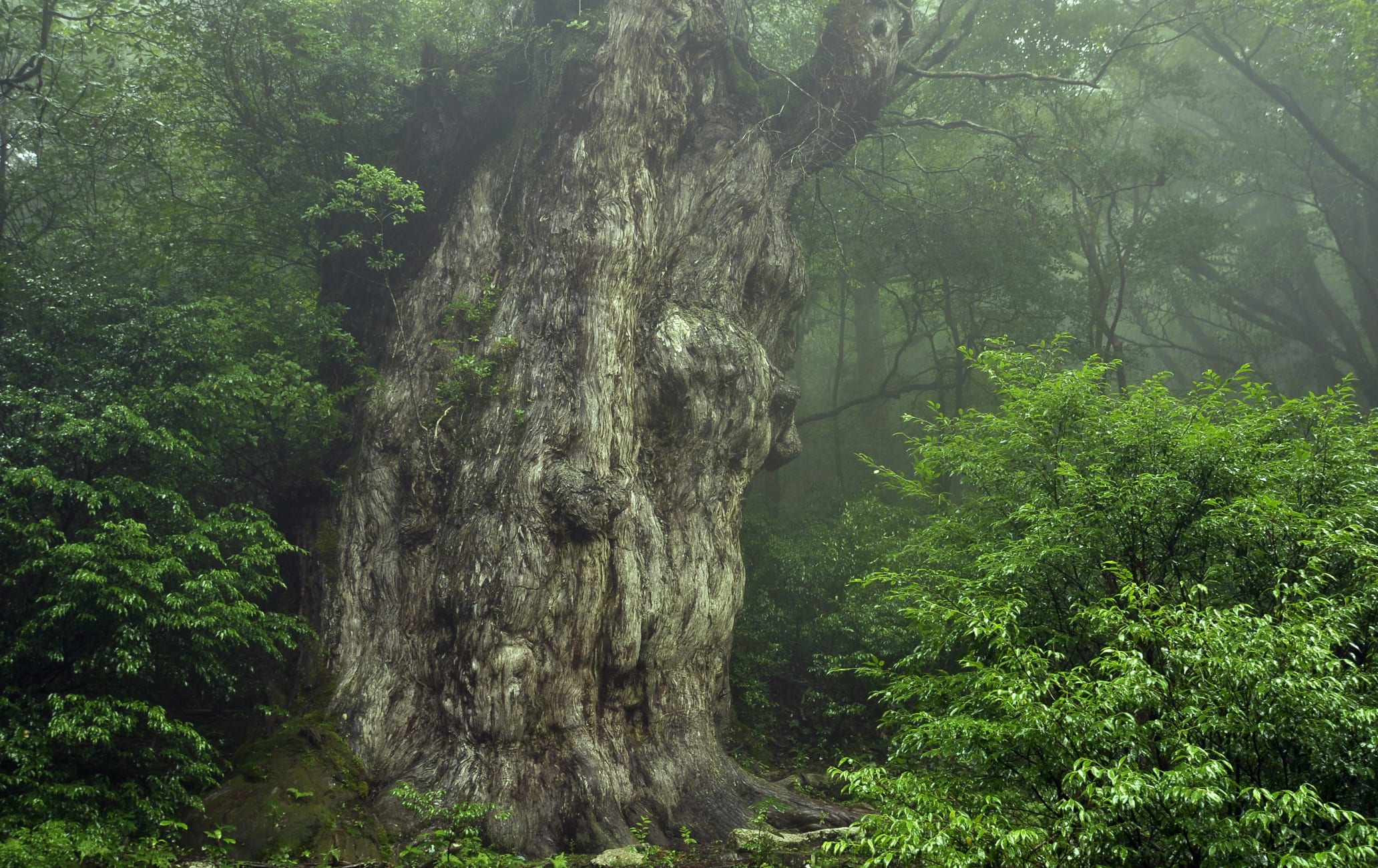An enormous Japanese cedar tree that is older than the nation of Japan itself
Jomon Sugi is the oldest and largest of the Yakushima (cedar trees) found on Yakushima . It is thought the tree is anywhere between 2,000 and 7,200 years old.
Quick Facts
Yakushima is a UNESCO World Heritage site
Access to the tree is restricted to an observation deck set 15 meters away
The hike to the tree takes around 10 hours—expect to leave before dawn to return by sunset
How to Get There
Jomon Sugi is accessible via the Shiratani Unsuikyo Ravine and the Arakawa Trail (starting at the Arakawa trailhead).
The Arakawa Trail is a 30-minute bus ride from the town of Anbo. From March to November, private cars are not allowed on the access road to the trailhead, so a shuttle bus from Yakusugi Museum is your best way to access the area.
Pre-historic forests
Jomon Sugi's name is a reference to the Jomon period (c. 8000 B.C.-300 B.C.) of Japanese prehistory. The tree is 25.3 meters high and a circumference of 16.4 meters. Dendrochronology conducted by Japanese scientists on the tree's branches indicated that Jomon Sugi is at least 2,000 years old, though other predictions put the tree's age closer to 7,000 years.
The importance of Jomon Sugi
The tree was officially discovered in 1966, and its importance sparked efforts to protect the forests of Yakushima , a move which ultimately led to the island's designation as a UNESCO World Heritage site in 1993.
Reach the observation deck to get the view of Jomon Sugi
After Yakushima's World Heritage designation, access to the tree was restricted to an observation deck built 15 meters from the base of the tree. The platform is designed to prevent damage to the roots of the Jomon Sugi in response to the increased number of visitors following Yakushima's UNESCO World Heritage Site status.
The other famous trees
Along the trail to Jomon Sugi, there are several other famous trees. These include Meoto Sugi, a pair of trees that resemble a husband and wife embracing; Daio Sugi (Great King Cedar) one of the largest trees on the island; and Wilson's Stump (named after the English botanist Ernest Henry Wilson), the remains of a giant cedar that was felled in the 1580s. Wilson's photographs of the stump, which date to the early 20th century, were recently discovered in the Harvard University archives.


























































